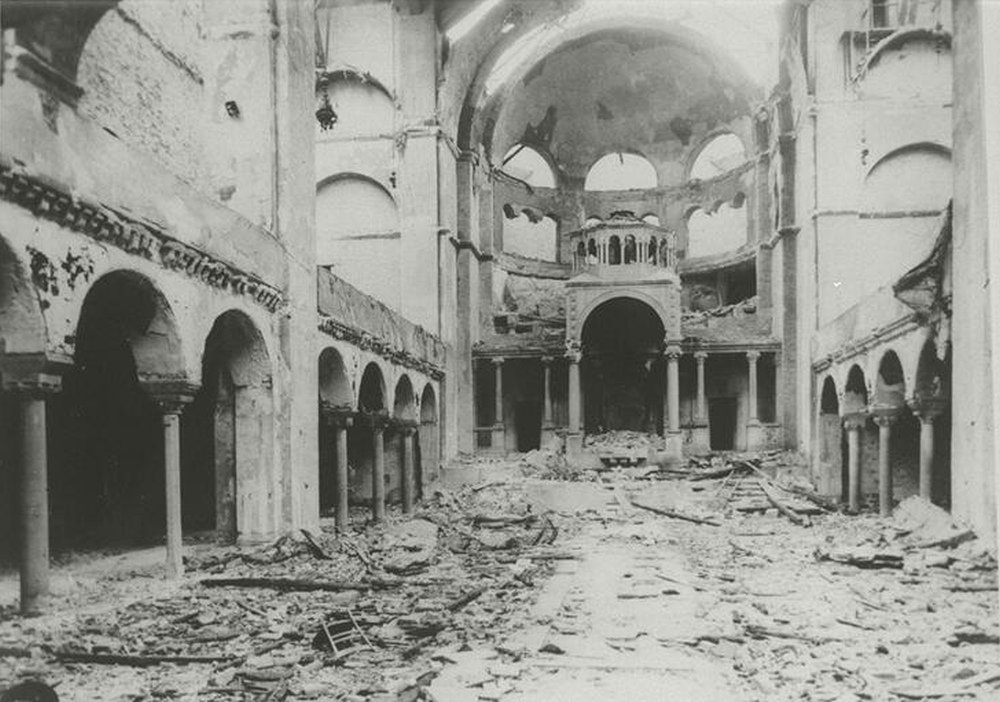On the night of November 9th, 1938, a brutal wave of anti-Jewish violence erupted across Nazi Germany and annexed Austria, which would come to be known as Kristallnacht, or the Night of Broken Glass. This ominous event marked a significant escalation in the Nazi regime’s campaign against Jews, which would lead to the Holocaust, one of history’s darkest chapters.
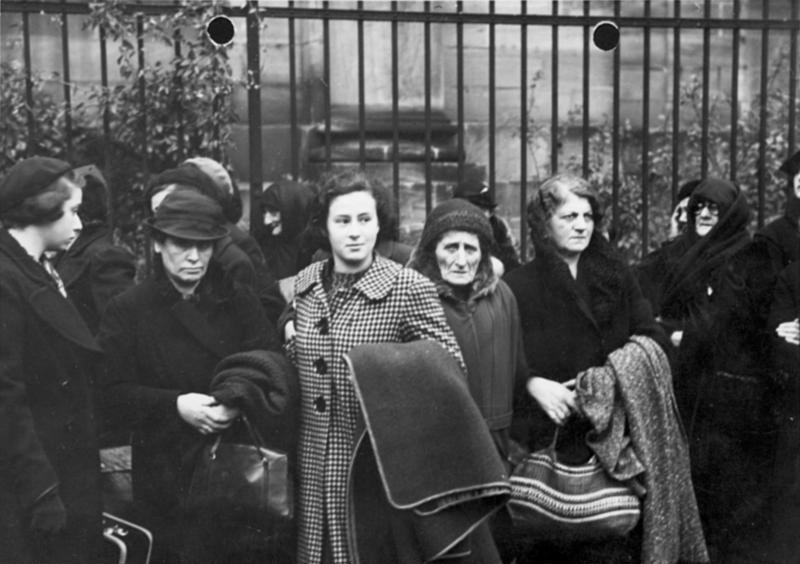
Polish Jews expelled from Germany in late October 1938
The night was characterized by the shattering of glass as SA paramilitary forces and civilians ransacked Jewish homes, businesses, and synagogues. The streets were littered with the broken windows of Jewish establishments, a somber reflection of the shattered lives within the community. Over 7,000 Jewish businesses were damaged or destroyed, and about 1,400 synagogues were set ablaze. The pogroms were a violent exhibition of the rampant anti-Semitism fostered by Nazi propaganda.
The pretext for the attacks was the assassination of German diplomat Ernst vom Rath by Herschel Grynszpan, a 17-year-old Polish Jew distraught over the treatment of his parents by the Nazis. The assassination provided Joseph Goebbels, Hitler’s Chief Propagandist, with the opportunity to incite a “spontaneous” demonstration against Jews. In a chilling act of state-sanctioned violence, police and fire brigades stood by as the destruction unfolded, only intervening to prevent the fires from spreading to non-Jewish properties.
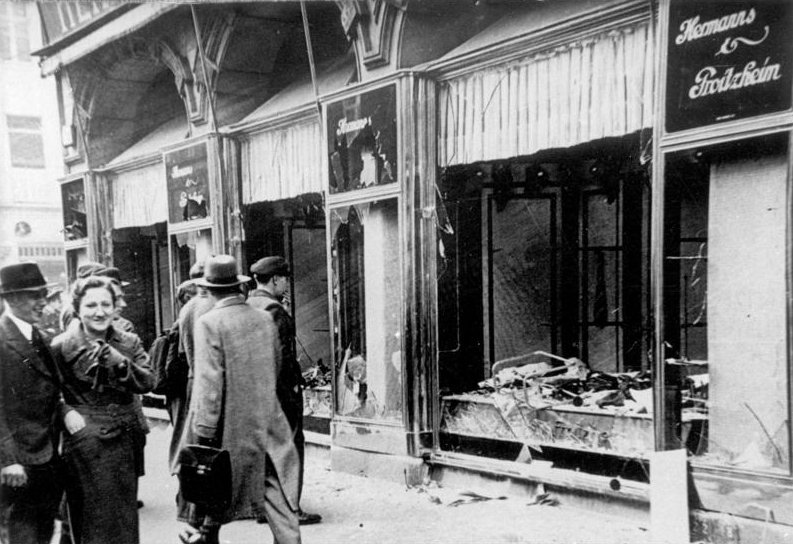
Kristallnacht, shop damage in Magdeburg.
The name “Kristallnacht” itself is somewhat euphemistic, downplaying the destruction and terror of that night. Jewish men were beaten and murdered; women were assaulted; children were terrorized. Synagogues, the very heart of Jewish communities, were reduced to ruins, their sacred Torah scrolls desecrated. By the end of the pogrom, approximately 30,000 Jewish men were arrested and sent to concentration camps in Dachau, Buchenwald, and Sachsenhausen, where hundreds more died as a result of mistreatment and brutal conditions.
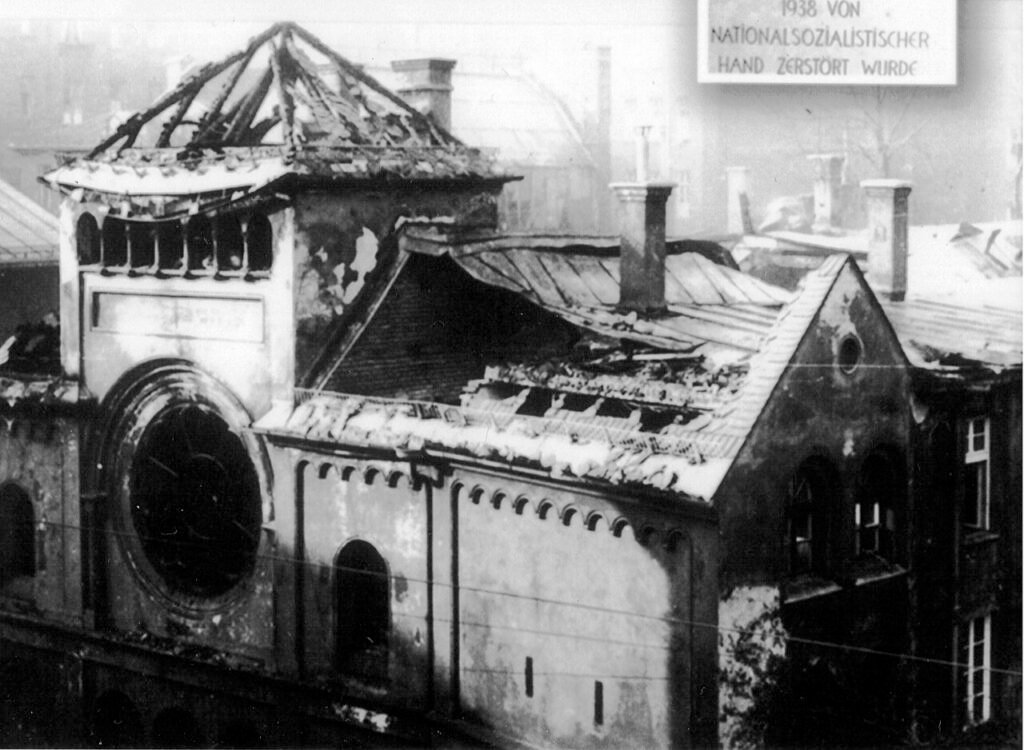
A ruined synagogue in Munich after Kristallnacht
The aftermath of Kristallnacht was devastating. It signified the transition from discriminatory policies and social ostracism of Jews to systematic violence and incarceration. It stripped any remaining illusions that Jewish people could live safely under Nazi governance. The event also served as a grim harbinger for the genocide to come, the Shoah, which would claim the lives of six million Jews.
The international response to Kristallnacht was one of horror and condemnation, but it did not result in significant action. Many countries, including the United States and Britain, expressed sympathy but little was done to ease stringent immigration quotas that could have provided Jews with a refuge from Nazi persecution.
In the wake of Kristallnacht, the Jewish community was fined one billion Reichsmarks for vom Rath’s death, and the damage caused during the pogroms, which were ironically and cruelly justified as reparation payments. This financial burden further crippled the Jewish population, which was already suffering under numerous repressive laws.
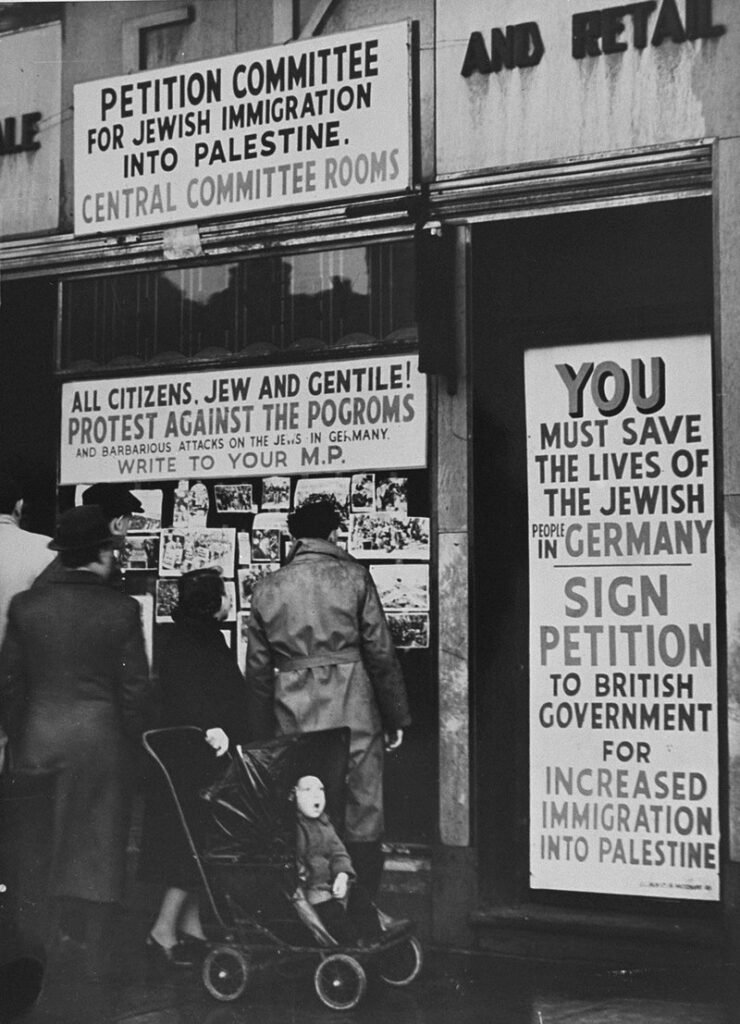
British Jews protest against immigration restrictions to Palestine after Kristallnacht, November 1938
Kristallnacht stands as a stark reminder of the consequences of hatred and the fragility of civil society. It underscores the importance of remembrance and the need for vigilance against all forms of bigotry and violence. As we reflect upon this dark event from November 9th, 1938, it implores us to commit to the defense of human rights and to ensure that such atrocities are never repeated.

